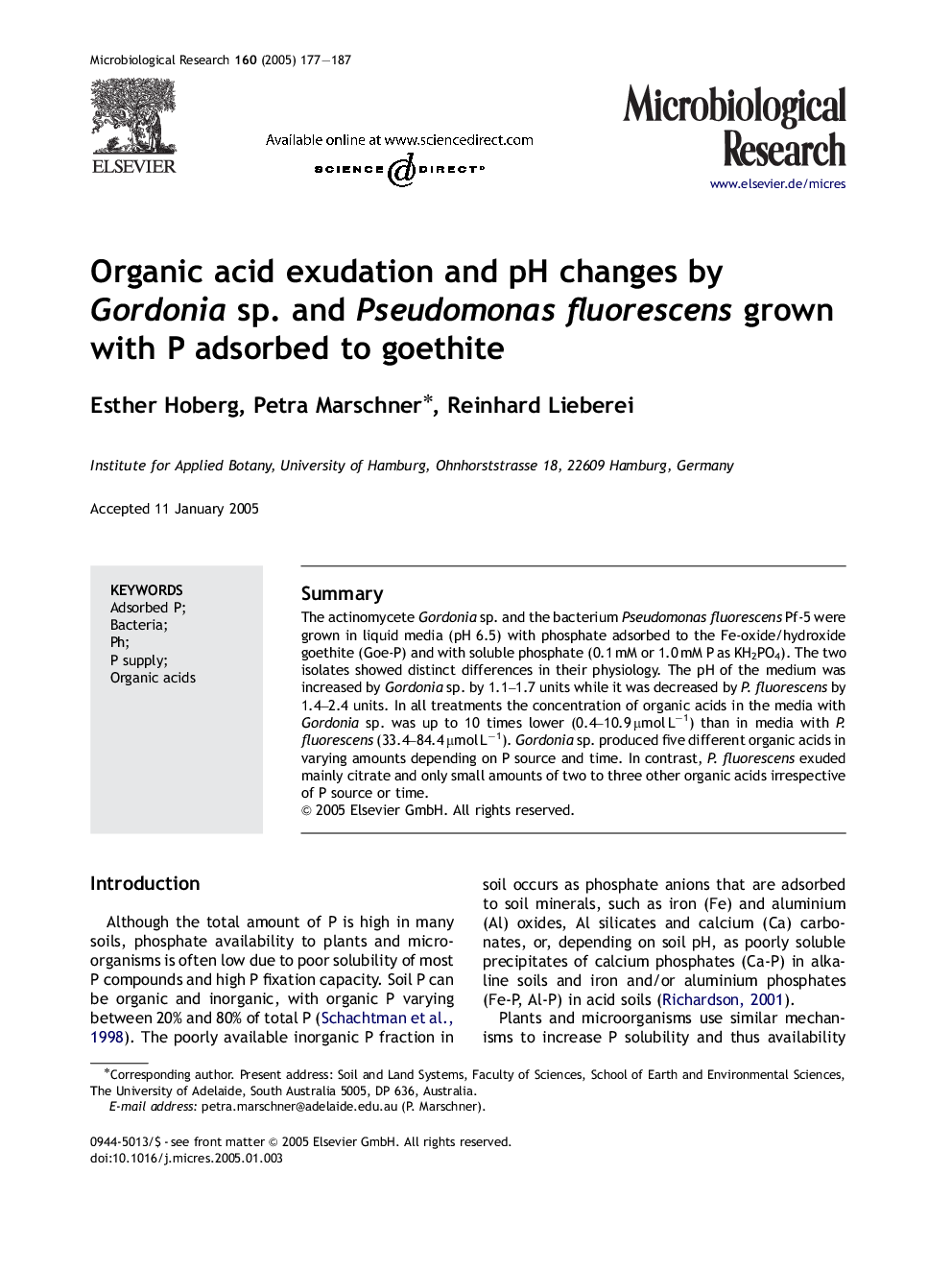| Article ID | Journal | Published Year | Pages | File Type |
|---|---|---|---|---|
| 10890800 | Microbiological Research | 2005 | 11 Pages |
Abstract
The actinomycete Gordonia sp. and the bacterium Pseudomonas fluorescens Pf-5 were grown in liquid media (pH 6.5) with phosphate adsorbed to the Fe-oxide/hydroxide goethite (Goe-P) and with soluble phosphate (0.1 mM or 1.0 mM P as KH2PO4). The two isolates showed distinct differences in their physiology. The pH of the medium was increased by Gordonia sp. by 1.1-1.7 units while it was decreased by P. fluorescens by 1.4-2.4 units. In all treatments the concentration of organic acids in the media with Gordonia sp. was up to 10 times lower (0.4-10.9 μmol Lâ1) than in media with P. fluorescens (33.4-84.4 μmol Lâ1). Gordonia sp. produced five different organic acids in varying amounts depending on P source and time. In contrast, P. fluorescens exuded mainly citrate and only small amounts of two to three other organic acids irrespective of P source or time.
Keywords
Related Topics
Life Sciences
Biochemistry, Genetics and Molecular Biology
Biotechnology
Authors
Esther Hoberg, Petra Marschner, Reinhard Lieberei,
